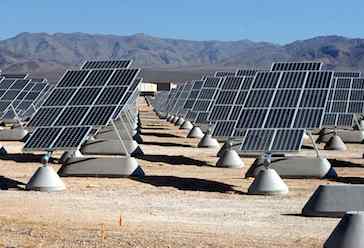 Most solar panel installers follow conventional wisdom handed down from architects, which holds that in the northern hemisphere, windows and solar panels should face south.
Most solar panel installers follow conventional wisdom handed down from architects, which holds that in the northern hemisphere, windows and solar panels should face south.
This makes intuitive sense since it would seem to maximize the amount of sunlight a panel will get as the sun tracks from one horizon to the other. But it isn’t true, at least according to a single study of homes in Austin, Texas. The Pecan Street Research Institute found that homeowners who aimed their panels toward the west, instead of the south, generated 2% more electricity over the course of a day.
The exact angle for best results depends on local conditions.
As the sun rises from the east and sets towards the west, then a bit west of south will give good results if the weather in the locality tends to be clearer in the afternoon.
Likewise in a locality with clear morning weather but regular afternoon cloud, then a bit east of south may be better.
Also some people confuse energy produced with achieving the best financial return. In many parts of the USA, electricity is sold at a higher price in the afternoons in summer, due to the widespread use of airconditioning. In such circumstances it is often worth maximising summer afternoon production to get the best return in money, even if total KWH production is slightly reduced.
For off-grid applications it depends on for what purpose the electricity is to be used.
For lighting, due south and nearly vertical is often best in order to maximise winter production when lighting needs are greatest and sunlight limited.
For air conditioning, a fairly shallow angle towards the west of south will maximise production at the warmest time of day.
Finally, in the case of very large grid tied systems that cost millions, these are virtually certain to be correctly aligned for best results. There is a lot of money involved and those in charge have a clear interest in getting it just right.
Smaller installations are often atop existing buildings and may not be perfectly aligned, but still generaly produce acceptable results.
3 Responses
It depends entirely on what you are doing with your photovoltaic power. If you are charging batteries then you most certainly want to face South. If you want the longest duration of nominal power generation, you want to face south.
Facing West cuts the duration of nominal power generation by 30%. That is allot of missing production. If the value of your power changes over time and you are selling back to the grid at time of use rates, then it might be a good idea to face southwest, in order to produce power when it is most expensive.
Unfortunately, most homeowners don’t have the luxury of deciding exactly what direction the modules will face as most home owners are installing on their fixed roof tops.
Most all the panels I see in photos are tilted at an angle to the south. At midday in the summer, the sun is about straight up. Why are the panels still angled to the south. Why aren’t they laying on their backs and pointing straight up to where the sun is????
John R, I live with solar panels, and yes, in summer the sun is straight up, but in winter it’s at a lower angle, so if your panels are fixed in place, it’s better to lose a tiny fraction of light in summer by having them tilted and have a better angle to the sun in winter. Also winter has shorter days, so you want the tilt to be optimized for winter to get the most out of your panels. Hope that makes sense. :)
It’s ideal if you have a tracking system to follow the sun, but not everyone has that.